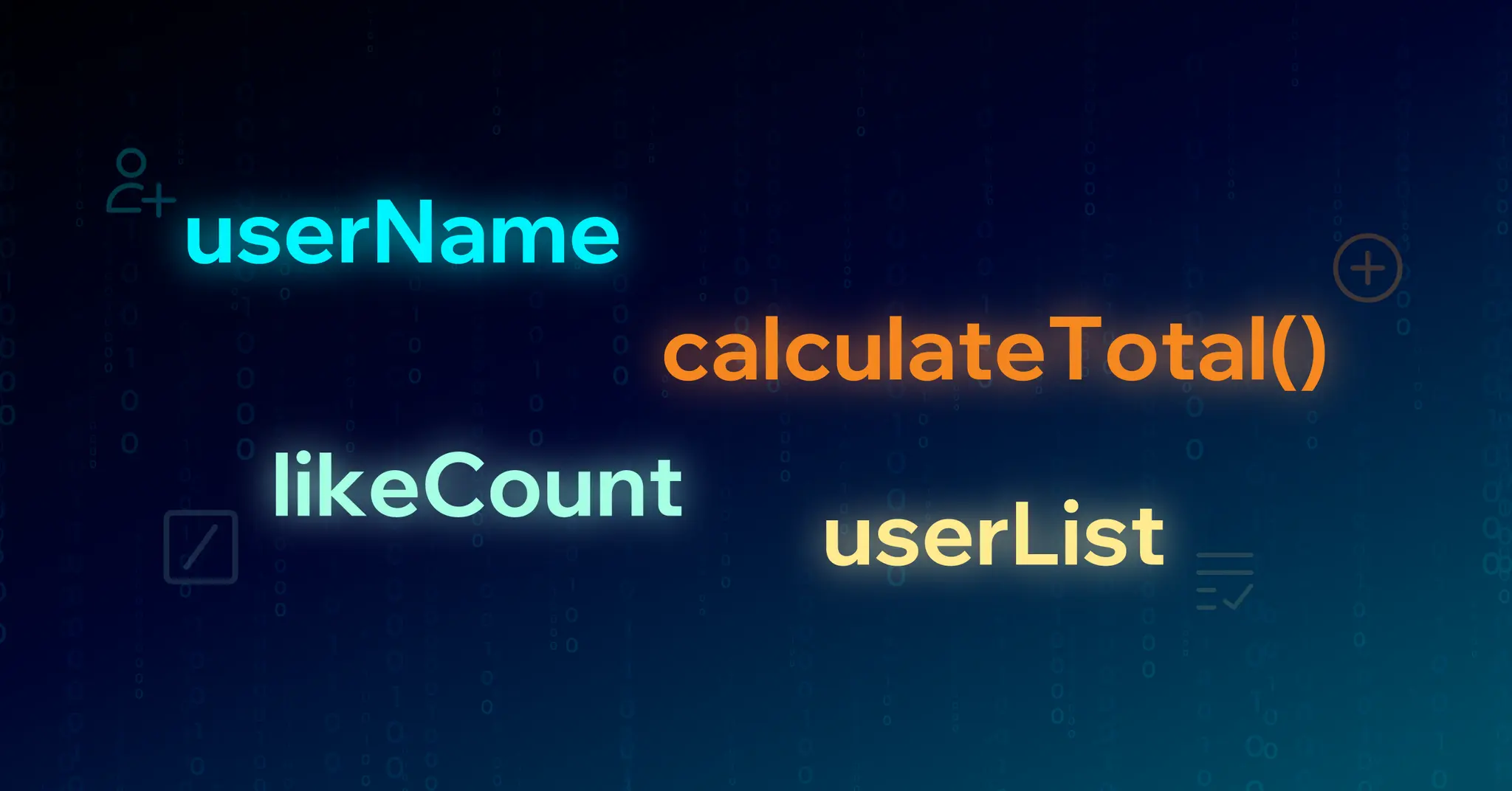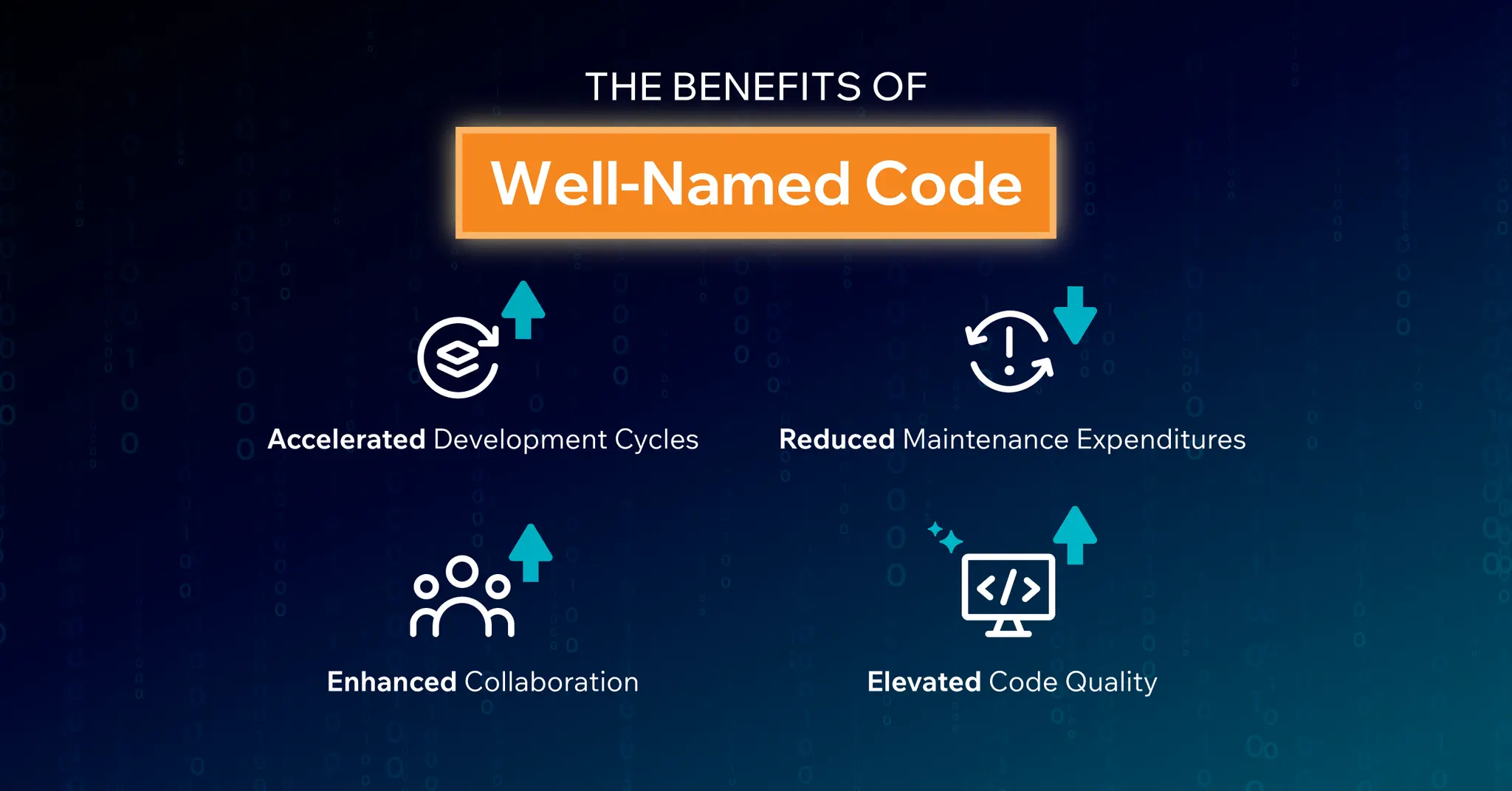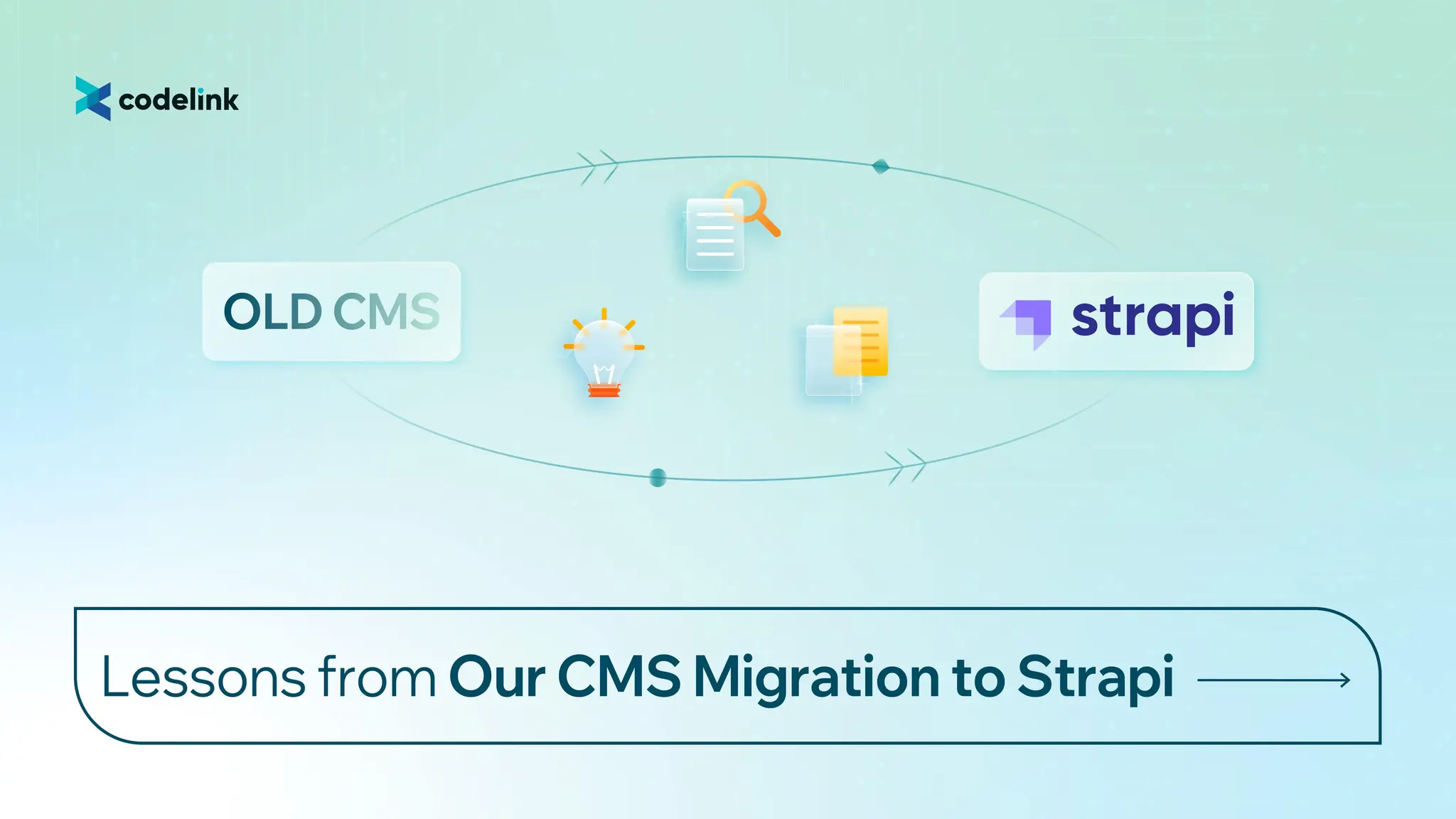Good Names, Clean Code: A Developer’s Guide to Clarity
Discover practical tips for mindful code naming to create a foundation of readable, maintainable, and collaborative code, and understand how it drives better development outcomes.

In software development, code functionality takes center stage. However, the often-underestimated role of naming conventions is equally essential.
An application that works today must still be readable tomorrow, by you or someone else. Poor choices in naming variables, functions, and classes can turn your codebase into an inscrutable puzzle. Behind every clean, maintainable codebase lies a habit of mindful naming.
At CodeLink, naming is the most critical fundamental practice. It shows your intent, fosters teamwork, and lays the foundation for scalable systems. This guide explores the importance of effective naming and shares practical tips to enhance the clarity of your code.
Why Does Naming Matter?
Naming isn't decoration, it's direction. Think of the names within your code as intuitive signposts. They should effortlessly guide the reader through complex logic and convey the purpose and intent of each element.
In contrast, poor naming is like navigating a city where all the street signs are in a language no one understands. Here's what happens when naming is treated carelessly:
- Increased cognitive load: Developers spend more time deciphering the meaning of variables or functions, diverting focus from the core logic.
- Increased risk of errors: Unclear names lead to incorrect interpretations, which can result in subtle bugs and unexpected behavior.
- Hindered collaboration: Code is the shared language in distributed teams (especially across cultures or time zones). Poor naming creates friction, delays, and misunderstandings.
- Reduced maintainability: Poorly named code requires a lot of time and effort to understand, and even once you get it, doubts may still persist. This makes code refactoring and modification more time-consuming and prone to mistakes.
- Reduced onboarding efficiency: New developers must first decode naming conventions before they can contribute value.
Practical Tips for Naming Success
These actionable strategies help ensure your names do more than identify; they explain, clarify, and align.

1. Focus on both Description and Intent
A good name doesn't just describe what something is, but reveals why it exists.
- Convey functionality: Opt for function names that clearly articulate their action. While processData() is an improvement over doStuff(), calculateOrderTotal() offers precise insight into its purpose.
- Reflect data meaning: A variable named d provides no context. In contrast, customerName, orderQuantity, or userLoggedIn immediately reveal the data they hold.
- Prioritize meaningful words: Steer clear of abbreviations unless they are universally recognized within your project's domain (e.g., URL, ID, HTTP).
// Bad
let x = 5;
function update(y) {
// ... some logic with y ...
}
// Effective
let itemCount = 5;
function updateUserProfile(userData) {
// ... logic to update user profile using userData ...
}
2. Follow Consistent Naming Conventions
Consistency in naming keeps your codebase clean, predictable, and easier to navigate, especially in collaborative or long-term projects.
- Establish a style: Choose naming conventions (e.g., camelCase for JavaScript variables and functions, PascalCase for classes, snake_case for database fields) and stick to them throughout your project.
- Secure team alignment: Within a team setting, particularly in remote or cross-functional scenarios, ensure that the entire team agrees upon and follows the selected conventions. Tools like linters can help automate the enforcement of this consistency.
3. Consider the Scope
Consider the scope of its use to prevent name collisions and improve traceability.
- Descriptive names for broad scope: Variables with extensive usage across your codebase benefit from more detailed names to prevent potential confusion.
- Concise names for narrow scope: For loop counters or variables confined to a small block of code, shorter, conventional names like i, j, or k are generally acceptable.
4. Prioritize Positive Boolean Names
Positive language is easier to read and understand.
- Positivity over negation: Boolean names with negative terms like isNotValid or isDisabled require extra mental effort to process. Opt for their positive counterparts: isValid and isEnabled whenever possible.
5. Use Verbs to Name Functions
Functions do things, so ensure their names accurately reflect this.
- Action-oriented clarity: Function names should typically begin with a verb that clearly describes the function's action (e.g., getUserById(), calculateTax(), validateInput()).
6. Naming Boolean Variables for Clarity
- Prioritize positive terms: Avoid negative boolean names like isNotReady or isInvalid. Scroll back to learn more about this in tip #4.
- Employ is/are/have/has prefixes: Using prefixes such as is, are, have, or has makes boolean variables easier to read. These prefixes immediately indicate that the variable represents a true/false state or condition (e.g., hasPermissions, isValid, areSelectionsEnabled).
7. Pluralize Collections Thoughtfully
Names of collections should reflect their plurality to ensure the reader knows they're working with a group of items.
- Use plural nouns: When a variable holds a collection of items, using a plural noun is a natural and intuitive convention (e.g., users, products, orders).
- Consider the List suffix: Alternatively, employing the List suffix with a singular noun (e.g., userList, productList, orderList) offers a consistent way to indicate collections. This method helps avoid confusion with irregular plurals in English (e.g., peopleList instead of peoples, fishList instead of fishes).
8. Maintain Consistent Domain Terminology
A consistent domain language bridges the gap between technical and non-technical discussions, simplifying communication with stakeholders.
- Align with the domain: Employ terms that mirror the business domain or how stakeholders describe things. If your client always refers to "clients", ensure your variables are named accordingly, not as customers.
The Benefits of Well-Named Code at CodeLink
At CodeLink, our commitment to clean code from thoughtful naming practices drives tangible results across client projects.

- Accelerated development cycles: Code that reads well is easier to modify, leading to faster feature delivery with fewer regressions.
- Reduced maintenance expenditures: Well-named code simplifies maintenance and debugging, which can lower a project's long-term costs.
- Enhanced collaboration: Thoughtful naming enhances communication and reduces misunderstandings, enabling our distributed teams to collaborate effectively on projects.
- Elevated code quality: Clean names are the entry point to clean architecture and scalable solutions. They invite clarity at every level of the system.
Conclusion
At its core, naming is an act of thinking. It forces you to clarify what your code does and why it matters.
Though naming might seem like a small detail, it has a big impact on how readable, maintainable, and collaborative your code becomes. It's also an act of empathy for your teammates, future maintainers, and even your future self.
You won't always get the perfect name on the first try, and that's okay. But if you aim for clarity and consistency, your code will always be better for it.
At CodeLink, we believe clarity is a competitive advantage. When our code speaks clearly, our solutions resonate strongly, ship faster, and scale better.
What naming principles guide your work? Share your experiences or favorite tips in the comments - we’d love to hear from you.

Linh Truong
Principal Developer
Linh Truong is a skillful Principal Developer with over ten years of experience in scalable web and mobile software solutions. Proficient in full-stack development, Cloud, and DevOps, using tools like JavaScript, .NET, Docker, and Terraform.






